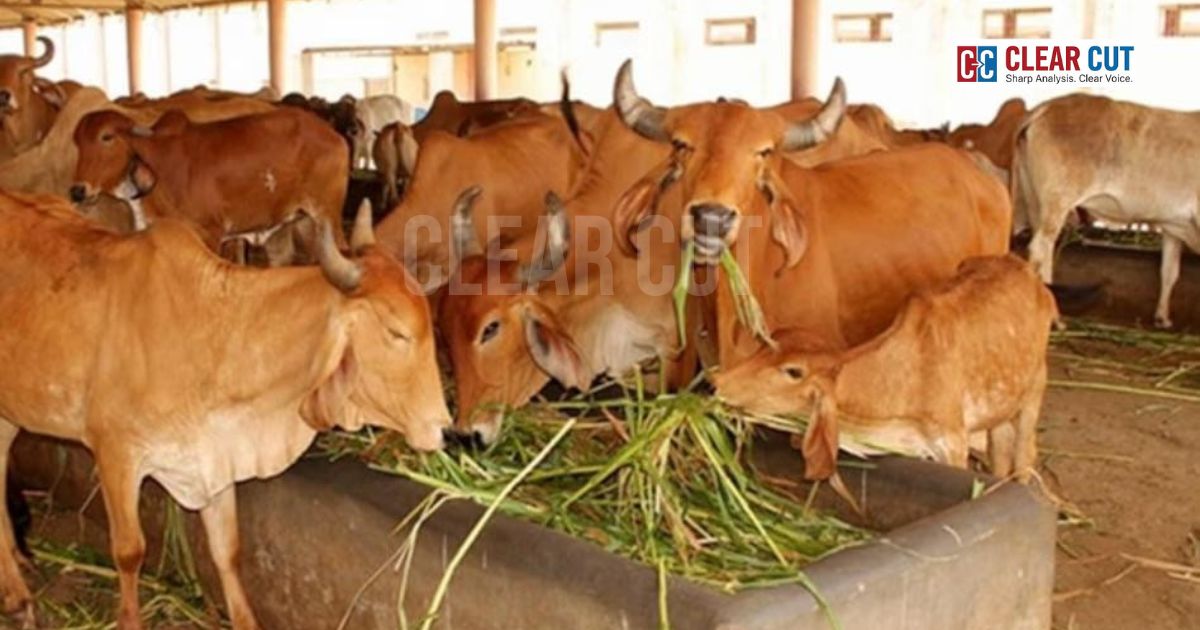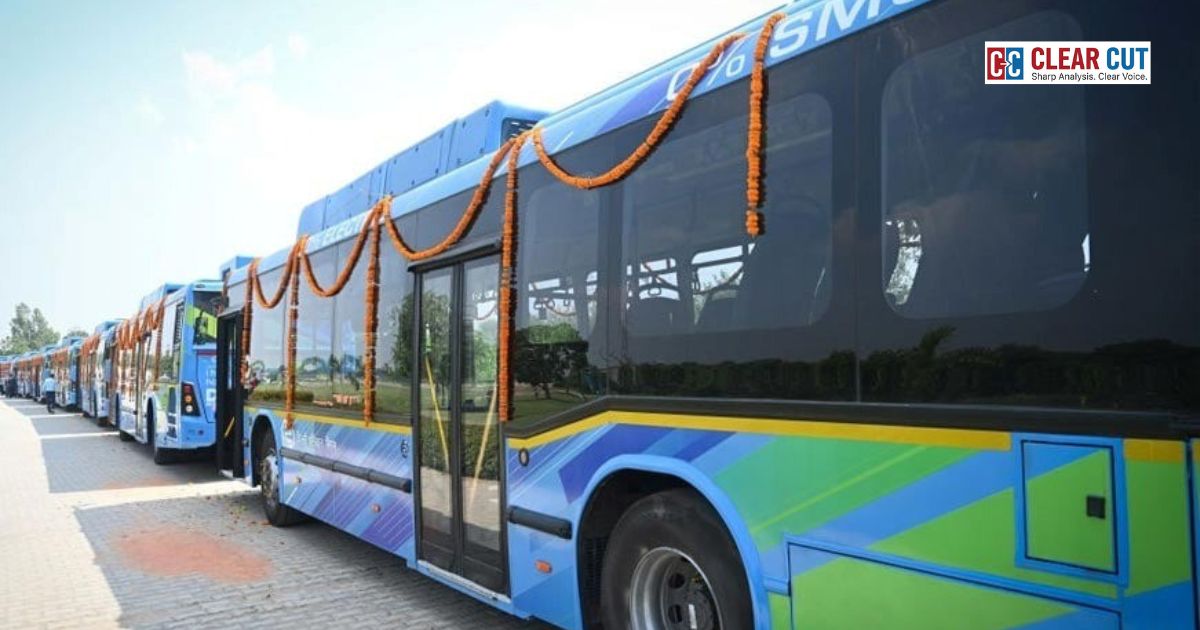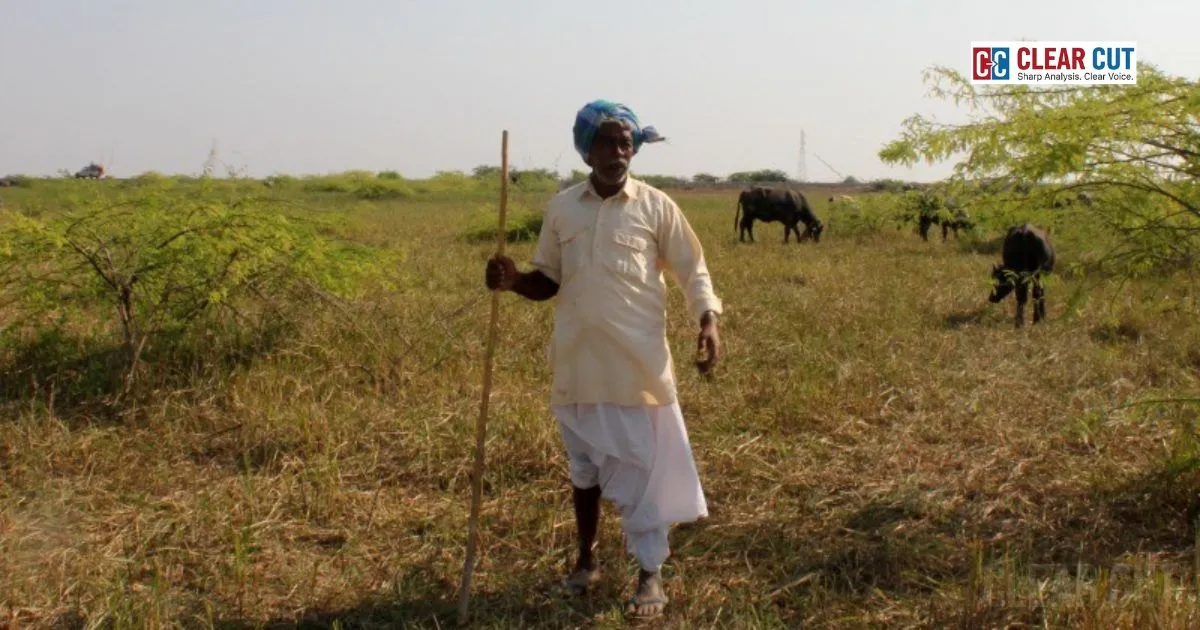A gausahala in UP | Photo Credit: IndiaToday
Clear Cut Climate Desk
New Delhi, UPDATED: Sep 13, 2025 10:20 IST
Written By: Janmojaya Barik
Animal protection has been historically, culturally, and economically significant in India, especially in Uttar Pradesh, where cattle are closely associated with livelihood and culture at large. Nevertheless, the state has always experienced increasingly serious problems caused by the growing number of stray cattle over the last decade. Stray animals found on city streets and rural roads caused road accidents, destruction of crops, and escalating issues of human safety as well as animal welfare. Realizing the importance, the Uttar Pradesh state government has made significant investments in animal protection schemes, leading to one of the biggest such initiatives in the nation.
Overcoming the Stray Cattle Problem
During the past eight years, Uttar Pradesh has established over 7,700 cow shelters (gaushalas), rehabilitating nearly 16 lakh stray cattle. This magnitude of effort is unprecedented in India, and the drive keeps increasing. In 2025, the government also announced the establishment of Adarsh Gaushalas, or model shelters, in each division of the state. They will have better infrastructure, including interlocked sheds, storage for fodder, and scientific waste management systems. The intention is not only to shelter stray animals at any random shelter available but also to provide a demonstration of best practices for animal welfare.
Financial Commitment
The financial investment of the state highlights the seriousness of the initiative. In the Uttar Pradesh budget of 2025–26, more than ₹2,000 crore was spent on cow protection and animal welfare. This includes ₹140 crore for big cow conservation centers and ₹123 crore to make veterinary hospitals and services more effective.
Shelters are also given financial support directly. The daily subsistence allowance for caring for cattle has been raised to ₹50 per animal from ₹30 previously. Under the Mukhyamantri Sahbhagita Yojana, the government collaborates with farmers and cattle rearers to take care of the cows and provide every month the expense of their maintenance. Concurrently, the Amrit Dhara Yojana offers loans up to ₹10 lakh (without any guarantor for loans of up to ₹3 lakh) to farmers who keep two to ten cows, which largely supports natural farming, which is ecologically sustainable.
Constructing Self-Sustaining Shelters
One of the most ambitious aims of the state government is to convert gaushalas into self-sufficient institutions. This includes converting shelters into rural enterprise centers by utilizing cow by-products. Projects aim at generating organic fertilizers, vermicompost, biogas, medicines from Panchgavya, and even environmentally friendly paints from cow dung.
The government is connecting this to its One District, One Innovation policy so that each district identifies at least one innovative cow-related product or venture. Women’s self-help groups and communities are being mobilized, generating employment and income as well as animal welfare.
Scaling Up Animal Healthcare
Although cows are the centerpiece of these initiatives, all-encompassing animal welfare is also on the agenda. Finance is being allocated to improve veterinary hospitals, enhance vaccination campaigns, and increase animal care facilities. Shelter staff and farmers are provided with training modules so that basic amenities such as care, disease prevention, and livestock handling are better taken care of. These steps are to ensure long-term animal health.
Oversight and Regulation
To improve accountability, the government has introduced stricter rules for shelters receiving financial aid, which was much needed. They must accept rescued or seized animals, submit to surprise inspections, and maintain audited accounts. District administrations are the ones monitoring shelter operations to prevent misuse of funds, which is a classic case. Additionally, temporary shelters are being established in overcrowded areas to manage excess cattle properly.
Social and Economic Impact
The effects of these initiatives are already manifesting. There are reports that stray cattle-caused road accidents have decreased, along with fewer cases of crop damage in villages. Farmers who previously lost money investing in wayward animals now stand to gain from community programs that incorporate cow-based enterprises into farming.
For women’s self-help groups, involvement in organic fertilizer production, natural farming inputs, and other ventures has generated new sources of livelihood. The convergence of animal welfare with rural development is slowly changing the image of gaushalas from philanthropic refuges to community resources and isn’t only limited to cows.
The Impact and Action
Uttar Pradesh’s initiatives in animal protection showcase a model that harmonizes cultural respect with the push for sustainability. The government is addressing a multifaceted challenge for the society as a whole.
It is expected that the way forward will involve incessant watchfulness. Shelter quality is extremely varied, and the sheer magnitude of the stray cattle issue calls for additional resources and monitoring. The success will hinge on open management, judicious utilization of finances, and ongoing participation of local communities.
If continued, Uttar Pradesh can become a leader in animal welfare, where cow and livestock protection is not merely a matter of tradition but also of creating sustainable rural economies.




